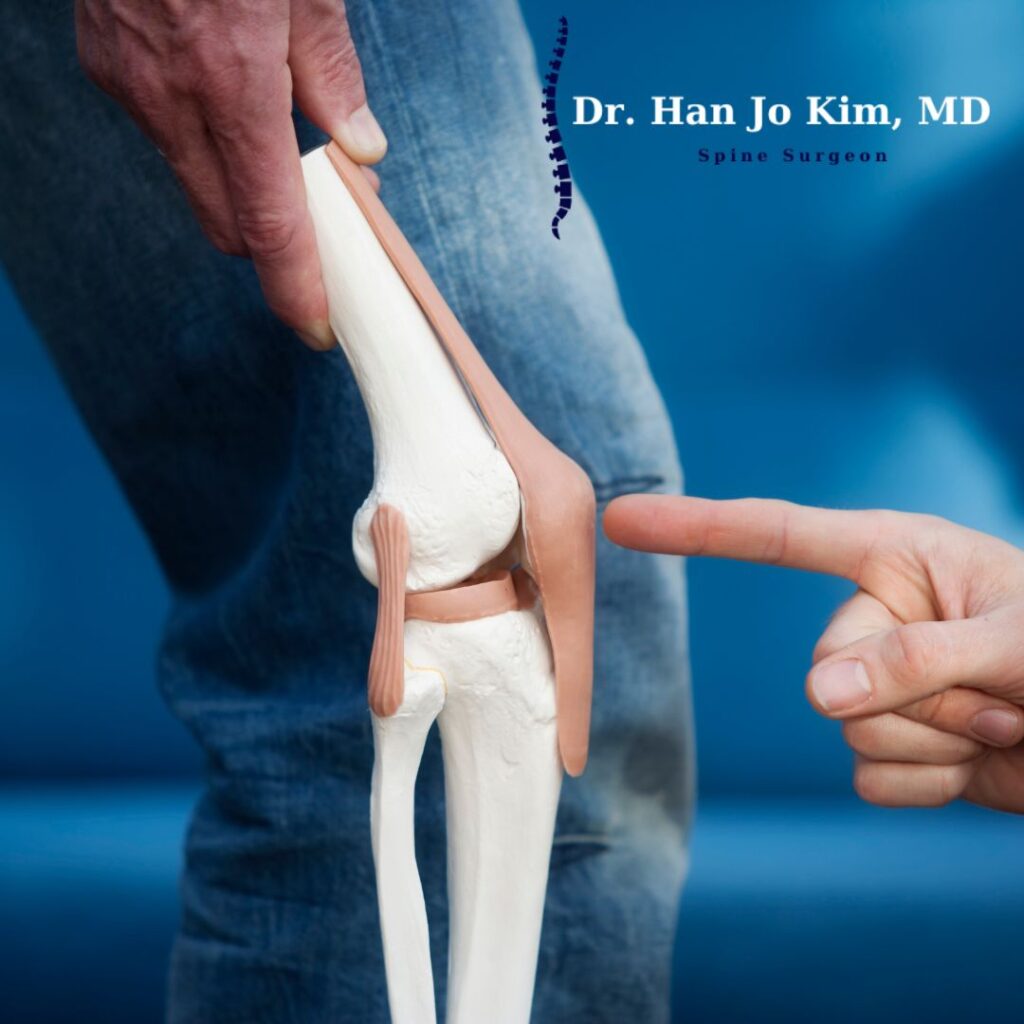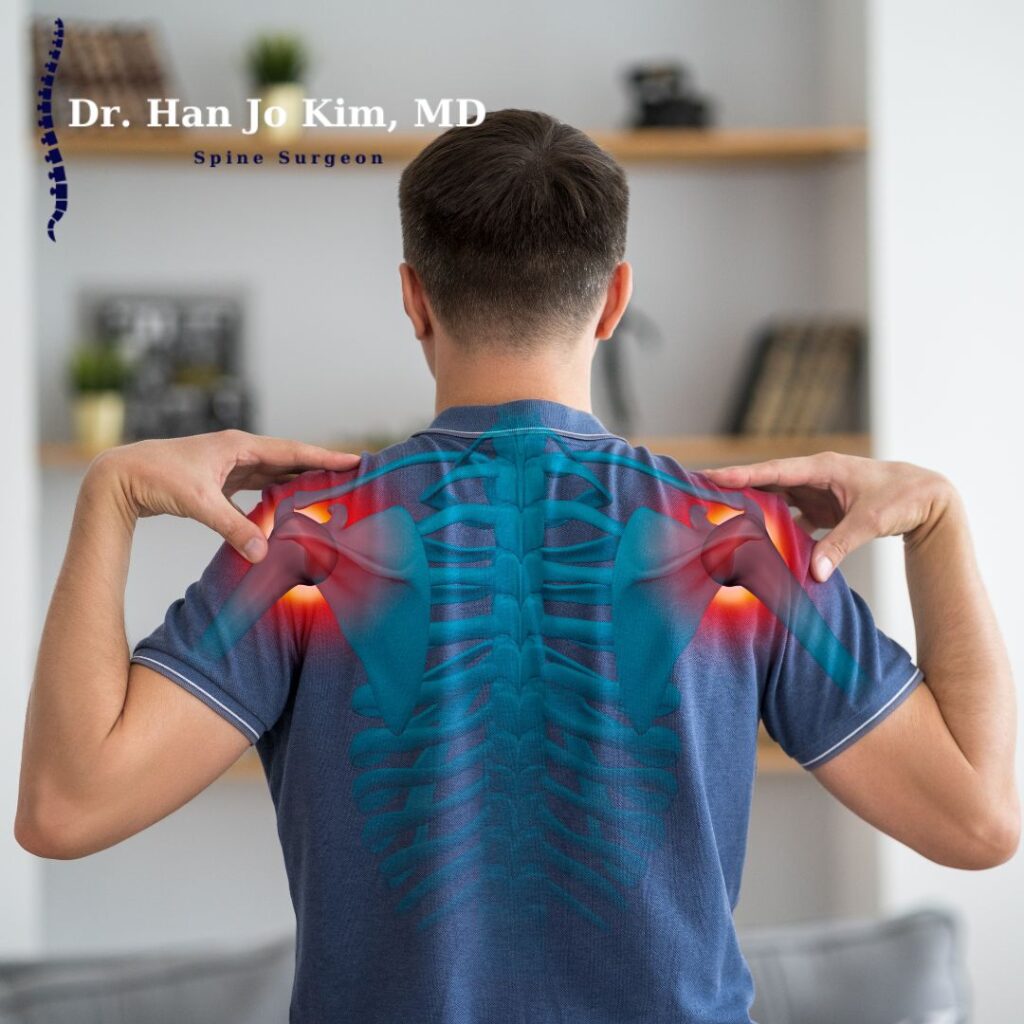Is Walking Good For Facet Joint Pain?
Have you been experiencing back pain, or are you already dealing with back pain? Is the back pain due to a sudden injury or accident? Did the pain start early in the lower back with a small amount of discomfort? Chances are, the discomfort was small enough that you were able to push through the pain. It’s best to use over-the-counter medication or an ice or heating pad. Should you find yourself needing a back pain specialist nj, Dr. Han Jo Kim is the person to see.
You continued this practice to manage the discomfort and pain, not interfering with your everyday life. However, if the pain is left undiagnosed and untreated, it can lead to chronic pain. This will interrupt your daily activities and enjoyment. The pain can vary in severity, but it is important to get a diagnosis as early as possible.

What is Facet Joint Pain?
A joint connects two or more bones in your body and works to contribute to movement and stability. In the spine, a pair of joints connect to the vertebrae, which are the facet joints. The joint is lined with tissue, cartilage and has a joint capsule. Any injury or condition can damage the facet joints and is also the leading cause of back pain known as facet joint syndrome. The facet joints allow your neck and back to bend forward and backward. They are also a common cause of pain in your spine. There are facet joints located in your lumbar spine, or lower back, in your neck, or cervical, as well as in your thoracic spine or midback. These areas can bear a lot of weight, endure a great amount of pain, and cause chronic back pain.
Causes of Facet Joint Pain
Like other joints in your body, facet joints are susceptible to stress, pain, stiffness, and swelling and can be damaged due to everyday activities. The exact cause of facet joint pain is dependent on which region of the spine is affected. As you get older, the years of strain and activity can cause the bones and joints that support your spine to wear down. The worn-down joints are what can lead to back pain in the lower back. Some forms of arthritis, such as rheumatoid arthritis and osteoarthritis, can also bring pain and joint damage to your lower back. Any traumatic injuries to your back and even neck can cause facet joint pain as well.
Any form of facet joint pain can make it difficult for you to move your body. It is essential and highly recommended that you see a physician knowledgeable about spinal disorders, such as Dr. Han Jo Kim, a back pain specialist nj, to get an evaluation of your pain, and they can help develop a treatment plan. For more information on what could be causing your back pain, click here.
How Our Back Pain Specialist NJ Can Ease Your Pain!
Luckily, many treatment plans are widely available to you if you are dealing with facet joint pain. The type of joint problem and the severity of the issue will depend on what kind of treatment will benefit you. Some treatment options may include anti-inflammatory medication, pain medication, facet injections, physical therapy, exercising, etc. Gentle exercises such as walking can help ease back pain and joint problems. Slow walking is a low-impact exercise that can help improve the position of your spine, keeping it slightly flexed, and offer some comfortability for those who have to facet joint problems.
Han Jo Kim – Back Pain Specialist NJ
Facet joint syndrome can cause a lot of pain and discomfort in any region of your spine, from the neck to the lower back, and if left untreated, it can lead to chronic pain. In some cases, spinal surgery will be needed. Dealing with the spine, especially if spinal surgery is needed, can be very complex. D.r Han Jo Kim specializes in spine surgery and will provide a comprehensive patient care approach when determining a treatment plan.
Dr. Kim will work with you to help find an alternative to surgery before ultimately recommending spinal surgery. Dr. Han Jo Kim and his team will provide the utmost care and help you fully recover from any spinal conditions, get you back on your feet, and enjoy life to its fullest. Dr. Han Jo Kim, a back pain specialist nj, offers cervical spine surgery, scoliosis surgery, spinal deformity surgery, and other spine surgeries. For more information contact us to learn more our services today!
How To Sit With Facet Joint Pain Safely
Proper posture is fundamental for individuals dealing with discomfort related to facet joint syndrome. Sitting with the right alignment will help minimize strain on the spine and support the lumbar region.
The lumbar facet joints play a significant role in stabilizing the vertebral column, and incorrect seating can intensify pain and lead to further issues.
Selecting a chair with appropriate height and depth is key to enhancing support for the lumbar facet area.
Ergonomic chairs tailored for spinal health can offer the necessary assistance. Regularly changing your position can alleviate pressure on the facet joint and reduce associated pain.
Integrating movement breaks throughout prolonged sitting periods can offer significant benefits. Employing effective strategies helps improve overall comfort and facilitates an active lifestyle.
- Proper alignment is crucial for reducing discomfort associated with joint pain.
- Investing in ergonomic furniture supports spinal health and comfort.
Consistently evaluate your chair and desk setup to effectively manage lumbar facet pain. Engage in stretches designed specifically to relieve tension in the back and joints.
Tips For Proper Spinal Posture

Understanding Facet Joint Pain
Facet joint pain can significantly impact one’s daily activities and overall quality of life. This type of pain originates from the small joints located between the vertebrae in the spine, known as facet joints.
These joints allow for flexibility and movement of the spine, but they can also be a source of discomfort when affected by various conditions.
Causes of Facet Joint Pain
Several factors contribute to the development of facet joint syndrome, including:
- Degeneration: Age-related wear and tear can lead to osteoarthritis in the facet joints, resulting in pain and inflammation.
- Injury: Trauma to the spine from accidents or sports can cause inflammation or damage to the facet joints.
- Hyperextension: Activities that involve excessive bending and twisting of the spine can strain these joints.
Symptoms of Facet Joint Pain
Patients with facet joint pain often report:.
- Localized Pain: Pain typically occurs in the lower back or neck, depending on the location of the affected joints.
- Radiating Pain: Discomfort may spread to the buttocks or thighs, commonly referred to as referred pain.
- Stiffness: Reduced flexibility and stiffness are common, especially after periods of inactivity.
- Increased Pain: Pain may worsen with certain movements, such as twisting or bending backwards.
These symptoms can interfere with daily activities, making it challenging to perform tasks that require physical effort.
Tips For Proper Spinal Posture
Maintaining optimal spinal posture is essential for reducing strain on the facet joints and preventing pain. Simple adjustments can enhance your posture and overall spinal health.
Key Tips for Maintaining Posture
Consider these strategies for better spinal alignment:.
- Adjust Your Work Environment: Ensure that your workstation is ergonomically designed to support a neutral spine.
- Use Supportive Furniture: Invest in ergonomic chairs that promote proper spinal alignment.
- Monitor Your Position: Regularly check your sitting and standing alignment to maintain a natural curve in the spine.
Tools for Support
Several tools can assist in maintaining proper spinal posture:.
- Lumbar Rolls: Utilizing lumbar rolls can provide additional support for the lower back while sitting.
- Cushions: Specialized cushions designed for lumbar support can enhance comfort during extended periods of sitting.
By implementing these strategies, individuals can reduce discomfort and support their spinal health, ultimately helping to alleviate symptoms associated with facet joint pain.
Exercises To Alleviate Back Pain

Engaging in physical activity is beneficial for individuals dealing with discomfort in the lower back. Stretching exercises, particularly the cat-cow stretch, effectively enhance flexibility while alleviating tension in the spine.
Performing these stretches for 15-20 minutes daily can significantly aid in addressing stiffness. Strengthening the core and back muscles is equally advantageous for promoting pain relief. Incorporating specific exercises aimed at lumbar facet joint strength three times weekly contributes to overall health.
Low-impact aerobic activities, such as walking or swimming, improve blood circulation and aid in recovery. Aim for 30 minutes of these activities five days a week to achieve optimal results.
Consulting with a specialist like Dr. Han Jo Kim can provide valuable insights into personalized exercise routines tailored to individual needs. His patient-centered philosophy integrates targeted exercises into a comprehensive care strategy.
Implementing these methods can help manage back pain effectively and enhance overall quality of life.
Recognizing Signs Of Facet Joint Syndrome
Chronic discomfort in the back or neck signifies potential issues within the spine, particularly relating to facet joints. Patients suffering from facet syndrome frequently report localized pain, which may intensify with movement, indicating facet joint involvement.
Symptoms can also extend to radiating pain into the buttocks or thighs, particularly in cases of lumbar facet joint pain.
Morning stiffness may be prevalent, restricting mobility and affecting daily routines.
Over time, facet joint degeneration arises from natural wear and tear associated with aging or previous spinal injuries. Identifying these indicators alongside other conditions, such as arthritis, is vital for appropriate treatment.
Seeking a specialist like Dr. Han Jo Kim can facilitate personalized care plans, which may include physical therapy and joint injections when warranted.
Facet Syndrome
- Facet syndrome is commonly associated with localized pain that worsens with movement.
- Radiating pain can occur in the buttocks or thighs, especially with lumbar facet joint involvement.
- Morning stiffness is a common symptom, impacting mobility and daily activities.
- Facet joint degeneration can result from aging and prior spinal injuries.
Effective Pain Management Strategies
Pain management is essential for improving quality of life. A variety of strategies exist for managing pain effectively, including medication options and alternative therapies.
Medication Options
Medications serve as a primary method to address pain. Nonsteroidal anti-inflammatory drugs (NSAIDs) are frequently utilized to relieve inflammation and discomfort without the need for stronger prescriptions. Opioids can be effective for intense pain but carry risks of dependency, necessitating careful monitoring.
It is important to consider that some medications may induce side effects impacting daily activities. Consulting with a physician to devise a personalized medication plan tailored to individual needs is advisable.
Alternative Therapies
Alongside conventional medication, alternative therapies like acupuncture and chiropractic care can offer relief.
Acupuncture employs fine needles to diminish pain and encourage healing, while chiropractic care focuses on spinal manipulation to ease discomfort. Numerous patients report enhanced outcomes through these holistic approaches, especially beneficial for chronic pain management.
These therapies may substantially augment the overall treatment strategy.
Implementing effective pain management strategies lays the groundwork for recovery; subsequent therapeutic interventions further boost these results.
The Role Of Physical Therapy
Physical therapy represents a fundamental component in comprehensive spine care.
This method not only aids recovery but also promotes enduring health benefits.
Recognizing the merits of therapy contributes to more effective pain management.
Benefits of Therapy
Therapy provides significant enhancements in mobility. Improved mobility facilitates movement and function in affected areas, leading to meaningful pain alleviation.
Through targeted exercises and specialized treatment protocols, physical therapists can markedly reduce pain levels. Notably, physical therapy is frequently endorsed as a first-line intervention prior to considering surgical options.
Patients are empowered to regain independence and control over their lives through individualized therapy plans.
Typical Treatment Plans

The standard physical therapy approach begins with an initial assessment, during which a comprehensive evaluation identifies specific patient needs.
Subsequently, a tailored exercise program is designed to bolster strength and flexibility according to personal objectives.
Treatment regimens may include various modalities such as ultrasound and electrical stimulation, enriching recovery processes. Continuous progress tracking allows therapists to adjust the treatment plan as necessary, optimizing patient outcomes.
The advantages of physical therapy highlight its essential position in a patient’s recovery journey from spinal conditions.
Long Term Relief Options For Facet Pain
Chronic back pain significantly impacts mobility and daily activities for many individuals. Various options exist for long-term pain relief, which are essential for enhancing overall quality of life.
Surgical interventions may be warranted for some patients experiencing symptoms of lumbar facet joint syndrome, particularly when conservative treatments do not yield sufficient results.
Minimally invasive techniques provide an avenue for addressing compression of the facet joints, reducing recovery time and associated risks.
Non-surgical approaches such as physical therapy can effectively help alleviate pain and improve function. Lifestyle modifications, including ergonomic adjustments, can supply the facet with necessary support and lead to significant facet joint pain relief.
Consulting with Dr. Han Jo Kim, a leading spine surgeon, allows for tailored treatment options to meet individual needs.
- Surgical Options:
- Minimally invasive techniques are gaining popularity for treating facet joint syndrome.
- Benefits include shorter recovery and less pain post-surgery.
- Dr. Han Jo Kim excels in managing complex surgical cases involving lumbar facet joint syndrome.
- Non-Surgical Treatments:
- Physical therapy focuses on strengthening the muscles supporting affected joints.
- Chiropractic care can address underlying issues leading to neck or back pain.
- Acupuncture may also provide relief from symptoms associated with chronic back pain.
- Complementary Strategies:
- Maintaining a healthy weight reduces strain on the spine and eases symptoms.
- Dietary choices can influence inflammation and overall joint health.
- Patient-Centered Care:
- Dr. Kim’s patient-first philosophy ensures tailored treatment options.
- Patients report increased confidence in returning to their activities post-treatment.
Impact Of Inflammation On Joint Health
Joint health is intricately linked to the body’s inflammatory response, affecting mobility and overall comfort. The condition known as lumbar facet joint syndrome is prevalent, often resulting in discomfort in the lower back.
Chronic inflammation around the facet joints in the lumbar region leads to degeneration, which can alter the sensation of pain and impair movement.
Research suggests that incorporating anti-inflammatory practices into daily routines can significantly alleviate symptoms associated with these conditions.
Regular exercise, a balanced diet, and proper stress management are vital strategies for reducing inflammation levels and improving joint health.
Main Points Regarding Inflammation and Joint Health:

- Inflammation’s Role: While inflammation is necessary for healing, uncontrolled inflammation may lead to chronic pain.
- Joint Damage: Persistent inflammation around the facet joints can result in the degradation of joint tissues, contributing to conditions like arthritis.
- Anti-Inflammatory Diet: Consuming foods rich in omega-3 fatty acids, such as fish and flaxseed, may help reduce inflammation.
- Consulting Specialists: Healthcare professionals like Dr. Han Jo Kim can develop tailored plans to manage pain and reduce inflammation effectively.
Further Considerations:
- How does inflammation affect the overall health of joints?
- Which lifestyle modifications are most effective in reducing inflammation?
- What role do supplements play in inflammation management?
- When should patients seek medical assistance for joint-related inflammation?
- Chronic inflammation is linked to various joint disorders, including arthritis, which can severely affect mobility.
- Regular physical activity has been shown to reduce inflammation and improve joint function.
- Dietary choices, particularly those high in omega-3 fatty acids, can play a significant role in managing inflammation levels.
- Consulting with healthcare professionals can lead to personalized strategies for effectively managing joint pain and inflammation.
What Is The Treatment For Facet Arthropathy Relief For Facet Joint Pain
Facet joint pain is a condition that can significantly diminish quality of life and hinder daily activities. Facet arthropathy refers to the degeneration of these joints within the vertebral column, often resulting from arthritis or injury.
Early intervention is key, and non-surgical treatment options frequently start with physical therapy, focusing on strengthening the muscles that support the spine and enhancing overall mobility.
Medications can aid pain management, while targeted injections may provide additional relief for discomfort.
When conservative measures prove ineffective at alleviating symptoms, surgery might be a necessary consideration. Individuals coping with persistent back pain should consult a specialist for a tailored assessment and treatment plan.
Key Points:
- Facet joint pain is often misdiagnosed and necessitates accurate assessment.
- Comprehensive management approaches enhance recovery and improve quality of life.
Exploring the signs and symptoms related to facet arthropathy is crucial for recognizing when further medical evaluation is warranted.
Understanding Facet Arthropathy Symptoms
Facet arthropathy affects many individuals, influencing spinal health and leading to distinct symptoms. Patients often report experiencing chronic pain localized in the lower back or neck.

This discomfort commonly presents alongside stiffness, which can significantly reduce the range of motion.
Everyday activities may become inhibited due to these issues.
Specific movements can exacerbate symptoms, making a professional medical diagnosis important. Left untreated, facet syndrome may result in heightened discomfort, leading to an increased reliance on analgesics for relief.
Timely intervention from a knowledgeable physician can enhance long-term management, with early recognition allowing for appropriate therapy plans before the condition worsens.
Facets of this condition can be effectively managed through comprehensive care. Dr.
Han Jo Kim, a leading expert in spinal conditions, offers tailored treatment strategies that address individual patient needs.
His approach emphasizes addressing pain management while considering lifestyle and personal goals.
- Common Symptoms of Facet Arthropathy:
- Chronic pain localized in the lower back and neck.
- Stiffness resulting in reduced range of motion.
- Symptoms often worsen with certain movements, underscoring the importance of professional assessment.
- Impact of Symptoms on Daily Life:
- Chronic pain can hinder work performance and personal activities.
- Limitations due to stiffness and discomfort can complicate daily tasks.
- Testimonials illustrate the emotional burden carried by those with untreated symptoms.
- Importance of Early Recognition:
- Early detection correlates with successful management of arthralgia symptoms.
- Unique fact: Many individuals wait an average of 6 to 12 months before seeking treatment.
Effective Pain Management Strategies
Managing discomfort effectively requires a range of tailored approaches to suit individual situations. Pharmacological methods involve medications such as non-steroidal anti-inflammatory drugs (NSAIDs) and opioids, known for their capacity to alleviate pain considerably.
Inflammation reduction is often a significant factor in minimizing discomfort, yet potential side effects underscore the need for thoughtful oversight.
Non-pharmacological methods also contribute substantially to effective pain management.
Physical medicine and rehabilitation techniques, including physical therapy and acupuncture, foster recovery and improve mobility. Lifestyle changes, such as consistent exercise and proper sleep hygiene, have a marked impact on pain perception and overall health outcomes.
- Pharmacological Methods
- Common medications encompass NSAIDs, acetaminophen, and opioids.
- Prescription drugs can produce varying effects along with side effects.
- Consulting healthcare providers is vital for optimizing management strategies.
- Non-Pharmacological Methods
- Physical therapy enhances function while reducing discomfort.
- Alternative therapies, such as acupuncture, show promising results.
- Cognitive behavioral therapy can address mental aspects of pain.
- Lifestyle Changes for Pain Management
- Maintaining a healthy weight can alleviate strain on the spine.
- Regular exercise improves physical strength and flexibility.
- Quality sleep plays a role in recovery and pain tolerance.
- Unique Key Points
- Multidisciplinary approaches often yield superior pain management results.
- Mindfulness practices may help reduce chronic pain symptoms.
| Method Type | Examples | Benefits |
|---|---|---|
| Pharmacological Methods | NSAIDs, Acetaminophen, Opioids | Effective pain relief, reduces inflammation |
| Non-Pharmacological Methods | Physical Therapy, Acupuncture, Cognitive Behavioral Therapy | Enhances recovery, addresses mental aspects of pain |
| Lifestyle Changes | Regular Exercise, Healthy Weight, Quality Sleep | Improves strength, reduces strain, aids recovery |
| Unique Key Points | Multidisciplinary Approaches, Mindfulness Practices | Superior pain management, may reduce chronic pain symptoms |
Role Of Physical Therapy In Treatment

Recovery after spinal surgery is significantly enhanced through the integration of tailored physical therapy into treatment plans. Customized exercises and specific techniques play an important role in the rehabilitation process.
Engaging in physical therapy fosters accountability and motivation among patients, leading to better management of symptoms of facet disorders.
Strengthening exercises targeted for core muscles provide crucial support in stabilizing the spine while alleviating back pain.
- Flexibility exercises enhance mobility and reduce stiffness, contributing to overall spinal health.
- Posture training empowers patients to maintain proper alignment, further supporting spinal integrity.
Long-term benefits of consistent physical therapy include sustainable improvements in lower back health, markedly decreasing the likelihood of future issues. Frequent sessions can improve the management of lumbar facet pain and related discomfort. Patient success stories highlight how commitment to personalized therapy facilitated the restoration of mobility and a pain-free lifestyle.
Dr. Han Jo Kim emphasizes the importance of these therapeutic exercises postoperatively, ensuring that each patient receives care tailored to their specific needs. Physical therapy complements surgical interventions seamlessly, bridging effective pain management techniques with comprehensive recovery strategies. Scheduling an appointment with Dr. Han Jo Kim initiates this vital process for individuals grappling with spinal conditions.
Benefits Of Facet Joint Injections
Individuals experiencing spine-related issues often seek various solutions to alleviate discomfort. Facet joint injections serve as a targeted treatment option, effectively addressing pain signals from specific joints located between the vertebrae.
Many patients report rapid relief, significantly enhancing mobility and daily functionality.
Long-term effects include improved participation in physical therapy and rehabilitation activities, thus supporting a comprehensive approach to pain management.
This treatment can also be instrumental in delaying the necessity for invasive surgical options, aligning with a patient-focused care strategy. A careful assessment ensures the selection of candidates who are likely to benefit, particularly those who have not responded to less invasive therapies.
- Immediate Pain Relief: Facet joint injections provide notable analgesic effects, often allowing patients to experience substantial pain relief within hours of administration. This rapid response is paramount for enhancing mobility and overall quality of life, especially for those grappling with chronic low back pain.
- Long-Term Management: Beyond immediate relief, these injections can contribute to a broader pain management regimen. Numerous patients find that the effects last several weeks to months, facilitating engagement in physical therapy and rehabilitation protocols earlier than they might without treatment.
- Patient Selection Criteria: Suitable candidates for these injections generally include individuals diagnosed with facet joint syndrome who have not received adequate relief through conservative measures. Comprehensive evaluations consider medical history, pain localization, and overall health status to determine eligibility.
- Diagnostic Utility: Facet joint injections may also offer diagnostic benefits, confirming whether the facet joints are the source of pain. This diagnostic function supports the development of more targeted and effective long-term treatment strategies.
- Reduced Need for Surgery: By managing symptoms of facet arthropathy effectively through injections, patients may be able to avoid or postpone invasive surgical interventions, underscoring the significance of conservative treatment options within their care plan.
Recognizing the role of physical therapy in treatment leads to the importance of exploring diverse non-surgical methodologies. The efficacy of facet joint injections highlights their critical role in managing spinal conditions and improving patient outcomes.
Next, we will examine radiofrequency ablation and its impact on the ongoing management of chronic spinal pain.
Facet Joint Injections
- Facet joint injections can provide rapid pain relief, often within hours, significantly improving mobility for patients with chronic low back pain.
- The effects of these injections can last several weeks to months, facilitating earlier engagement in physical therapy and rehabilitation.
- Comprehensive evaluations are conducted to determine suitable candidates for injections, focusing on those with facet joint syndrome who have not found relief through conservative treatments.
- Facet joint injections can also serve a diagnostic purpose, helping to confirm the source of pain and guiding more effective long-term treatment strategies.
Exploring Radiofrequency Ablation
A minimally invasive procedure offers a significant approach to alleviating pain associated with spinal conditions. This treatment specifically addresses pain signals sent to the brain by disrupting nerve function.
During the procedure, local anesthesia numbs the area, enabling the insertion of a specialized electrode.
This method focuses on accurately heating affected nerves, effectively relieving lumbar facet joint pain.
Patients often experience considerable reductions in discomfort and an enhanced quality of life. Post-procedure, most individuals can expect a brief recovery period, typically involving rest and a gradual return to daily activities.
- How the Procedure Works:
- Utilizing radio waves to generate heat, this technique damages nerve tissues responsible for pain. Patients seeking relief from facet joint arthritis may benefit significantly.
- Preparation includes local anesthesia and the patient positioned comfortably. Electrodes are then inserted near the affected nerves, particularly in cases of a diagnosis of facet arthropathy.
- During the procedure, individuals may feel a slight sensation as nerve tissues are targeted, addressing issues like lumbar facet pain.
- Expected Outcomes:
- Patients generally report a reduction in pain in the targeted areas, leading to improved mobility and an overall treatment for facet arthropathy.
- Long-term outcomes may include enhanced quality of life and reduced reliance on medication, essential for those managing chronic pain conditions.
- Potential Risks:
- Common risks involve infection at the injection site and damage to nearby nerves, which can be concerning for individuals facing a diagnosis of facet syndrome.
- Less frequent complications may include blood vessel damage and alterations in sensation, necessitating close monitoring.
- Recovery Time:
- Typically, recovery time ranges from a few hours to a few days, influenced by individual health and the severity of the patient’s spinal condition.
- It is important to adhere to self-care recommendations, including avoiding strenuous activities during the recovery phase.
- Factors influencing recovery include overall health and the extent of lumbar facet joint pain experienced by the patient.
Nonsurgical Treatment Options Available

Effective management of spine health often relies on a variety of noninvasive techniques. Dr.
Han Jo Kim emphasizes a personalized approach, focusing on methods that prioritize well-being before considering surgical treatment.
Various supportive treatments can enhance recovery and minimize discomfort:.
- Physical therapy can improve strength and mobility, addressing symptoms of facet joint issues.
- Corticosteroid injections are known to reduce inflammation and alleviate pain associated with conditions like facet arthropathy.
- Chiropractic care employs spinal manipulation techniques to relieve discomfort and promote overall wellness.
- Alternative therapies, such as acupuncture and massage, can enhance mobility and reduce pain effectively.
Patient preferences significantly influence the selection of treatments. By ensuring that care plans align with individual lifestyles, Dr. Kim enhances the likelihood of optimal recovery while addressing symptoms of facet joint problems. This comprehensive approach sets the foundation for effective diagnosis and treatment, guiding patients through their journey toward improved spinal health.
Spine Health Management
- Studies show that physical therapy can improve patient outcomes by up to 70% for spine-related issues.
- Corticosteroid injections can provide pain relief for several weeks, allowing patients to engage more fully in rehabilitation.
- Research indicates that chiropractic care can lead to significant improvements in pain and function for patients with spinal discomfort.
- Alternative therapies like acupuncture have been shown to reduce chronic pain in up to 50% of patients.
When Surgery Becomes Necessary
Recognizing when surgical intervention is appropriate requires a thorough evaluation of specific spinal conditions. Persistent spinal pain, particularly pain caused by facet joint issues, that fails to respond to conservative treatments often indicates the necessity for surgical options.
Indicators for surgical intervention include ongoing pain and stiffness that significantly limit daily activities.
Neurological symptoms, such as weakness or numbness, may suggest potential nerve damage.
Structural deformities can progress over time, demanding timely correction.
- Indicators for Surgical Intervention:
- Severe pain not alleviated through conservative measures, impacting daily activities and overall quality of life.
- Progressive neurological deficits such as weakness or numbness indicating potential nerve damage in the spine.
- Structural deformities that worsen over time, requiring correction to prevent further complications related to spinal stability.
- Surgical Outcomes and Recovery Expectations:
- Most patients experience significant pain reduction and improved function post-surgery, often alleviating their previous discomfort.
- Recovery durations vary depending on the procedure but typically span from weeks to several months.
- Ongoing rehabilitation frequently enhances recovery and aids in restoring full mobility and functionality.
- Unique Considerations in Decision-Making:
- Patient history and lifestyle factors play a significant role in customizing effective treatment plans.
- Non-surgical alternatives are thoroughly evaluated to find the least invasive treatment before considering surgery.
- Individualized assessments ensure that risks and benefits are carefully weighed to determine the best course of action.
- Importance of Accurate Diagnosis: Accurate diagnosis is integral in identifying when surgical intervention is necessary. Conditions such as facet joint dysfunction require thorough evaluation to avoid unnecessary procedures and ensure appropriate treatment pathways.
Awareness of the indicators for surgical intervention, along with realistic recovery expectations, empowers patients to make informed decisions about their spine health. Engaging in discussions about all available options with healthcare providers helps formulate a tailored strategy for effective management.
Importance Of Accurate Diagnosis
Achieving a precise assessment is paramount for effective treatment of spinal conditions. Advanced imaging technologies, such as MRI and CT scans, play a significant role in identifying issues like developing facet arthropathy.
These tools provide clear visuals of the spine, assisting specialists in formulating a full range of treatments available.
When patients experience back pain, a thorough clinical evaluation, performed by experts like Dr.
Han Jo Kim, ensures that no underlying causes are overlooked. Misdiagnosis not only delays recovery but can also lead to ineffective treatment modalities, exacerbating pain and prolonging suffering for patients seeking relief.
- Key Role of Imaging: Advanced imaging techniques are crucial for accurate spinal diagnosis.
- Clinical Evaluation Implications: Comprehensive assessments prevent misinterpretation and facilitate effective treatment.
- Consequences of Misdiagnosis: Delayed recovery and prolonged suffering can stem from incorrect diagnoses.
Questions to Answer:
- What specific imaging techniques are most effective in diagnosing spinal conditions?
- How can patients ensure they receive an accurate diagnosis?
A collaborative approach involving both imaging and clinical evaluation significantly enhances treatment outcomes. Correct identification of the cause of pain is fundamental to developing an effective treatment plan. Dr. Kim’s comprehensive approach prioritizes non-surgical options and tailors techniques to address specific issues, including facet joint pain relief. Proper evaluation allows for the selection of therapies capable of reducing discomfort, ultimately leading patients toward a path of improved well-being. If you’re in need of medical assistance, contact us today.


